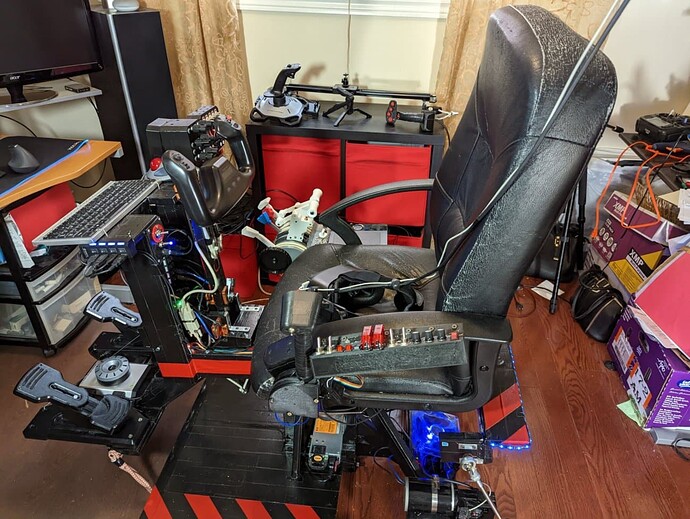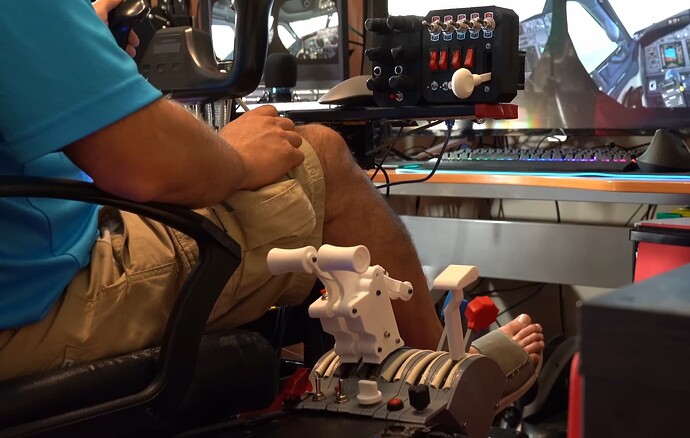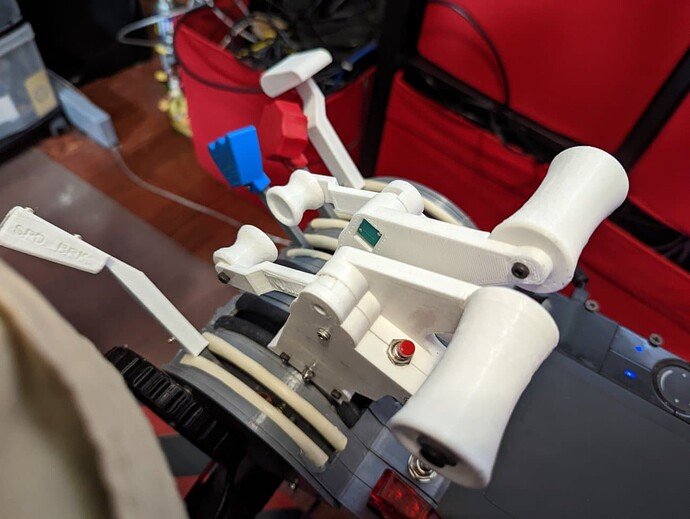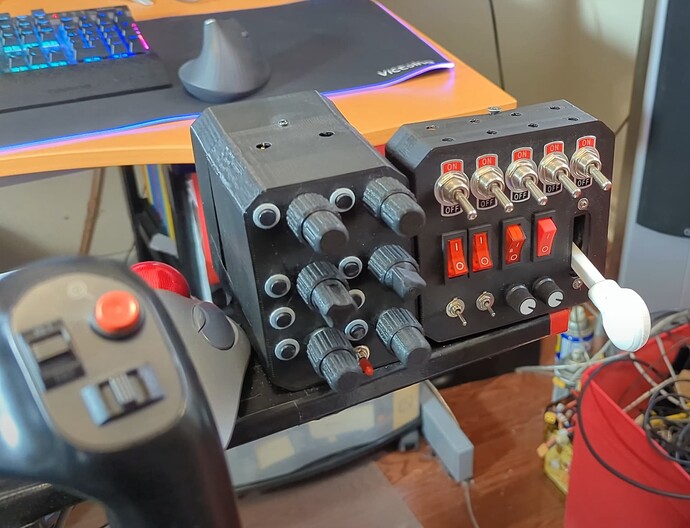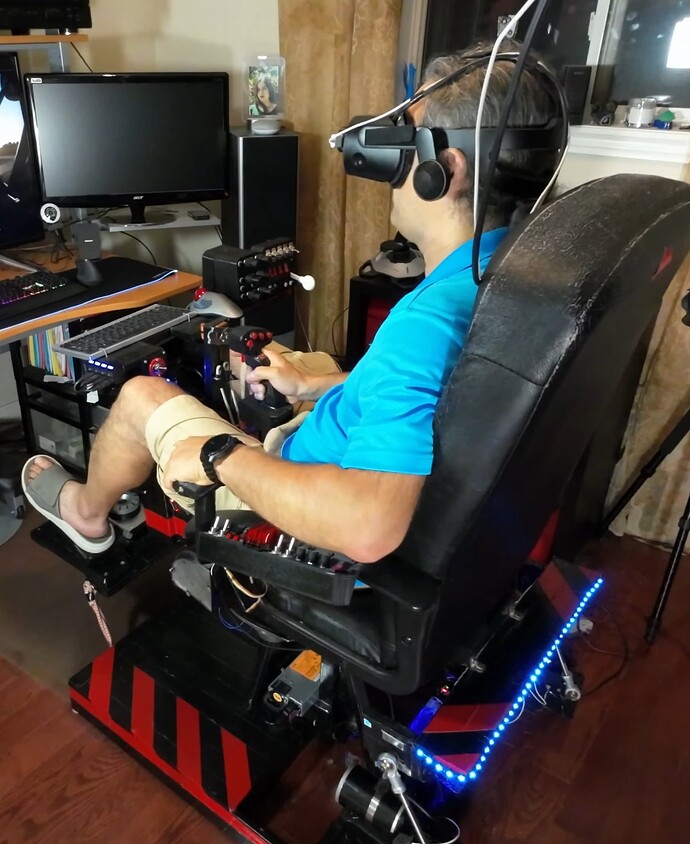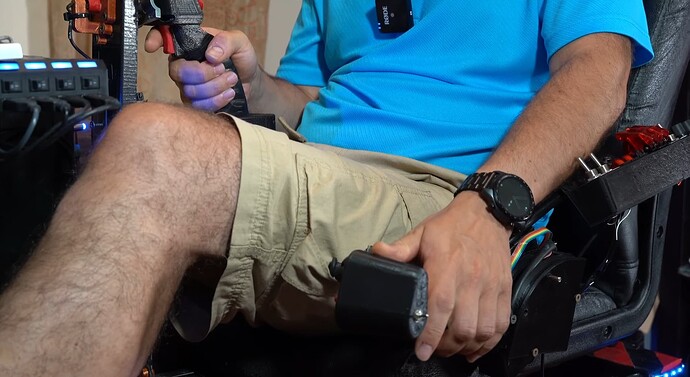Here’s a video with a brief introduction to my DIY Motion Simulator Cockpit with custom-built controls, followed by a detailed walkaround and a few demo flights in different control configurations. It’s a 2DOF motion rig, but considering the ultra-low build cost (under $500, including all controls) it’s incredibly immersive. A whole new level of VR immersion, in fact. I designed it as a universal VR cockpit that can work with any plane or helicopter and allows for intuitive and realistic operation. Everything that’s needed for the most intense phases of the flight is right under my fingertips at all times, there’s no need for a VR controller or a mouse during actual piloting anymore. DIY vibration transducers (butt-kickers) complete the immersion. It feels so real that I scrapped my plans of adding another motor to make it a 3DOF. I feel it’s not worth the effort and additional cost. Combined with how VR tricks our brains, the illusion is perfect.
The build includes the following fully custom-built systems and controls:
- 2DOF Motion platform with seat, driven by FlyPT Mover software (motion cues based on plane orientation and acceleration data)
- 2 Vibration Transducers (butt-kickers) driven by SimShaker software
- Pendular Yoke with extended travel (frictionless hall sensors), convertible to Joystick / Cyclic configuration with extended throw and precision, designed and built with frictionless hall sensors. A 3-axis system with smooth bungee resistance, soft return and no central detent.
- Encoder box with 6 3D-printed dual encoders (using cheap single encoders), 8 buttons and 3-pos switch, driven by custom MobiFlight profile
- Switch Box with lockable spring-loaded Gear Lever, 11 switches and 2 analog pots (MobiFlight)
- Boeing 737-style Throttle Quadrant, 8-axis (2 Throttles, 2 analog thrust reversers, Speedbrake, Flaps, Prop, Mixture), TO/GA and T/A disconnect buttons, Trim Wheel, Aileron/Rudder trim knob, magneto rotating 5-pos knob, fuel cut-off switches, starter and APU start buttons.
- HOTAS Throttle with analog Thumbstick, convertible to heli Collective control with RPM axis.
- Left-side Switch Box with 9 switches and 3 analog pots.
- Extra 2-axis analog thumbstick for space simulators or extra functionality
- Off-the-shelf Saitek rudder pedals (the only non-DIY control)
A comparable off-the-shelf setup would cost me ~$4500 and would not be as universal and intuitive as mine. I hope this project inspires others to build their motion VR rig versions. Believe me, it’s worth the effort!
Here’s a video of the full flight:
Feel free to refer to my previous topic and my first topic (now locked for replies) for build photos and progress. I’m creating this topic to continue the discussion…
All 3D design, sample configuration and 3D-printer files are available for a FREE DOWNLOAD (optional donation) at flightsimulation.romandesign.ca
Check out My MSFS Airports, along with free scenery packs: Ottawa CYOW, Toronto Buttonville CYKZ, Oshawa CYOO, Brampton CNC3 Available at flightsimulation.romandesign.ca or at Microsoft Flight Simulator Marketplace, ORBX Direct, and simMarket.
Some photos of the project:
Motion Simulator
Side View
Pendular Yoke, Throttle Quadrant with trim wheel and reversers, Dual Encoder box, Switchbox with Gear lever
Cockpit in action
Throttle Quadrant - Boeing 737 inspired + Prop controls
HOTAS convertible to heli Collective + Switchbox + Thumbstick
6 Dual Encoder box + Switchbox with Gear lever
Joystick + HOTAS configuration
Heli Cyclic + Collective configuration
Edit: I just realized there is a “Home Cockpit Builders” category, so I’m moving the post here and editing it for a better summary of the project.



